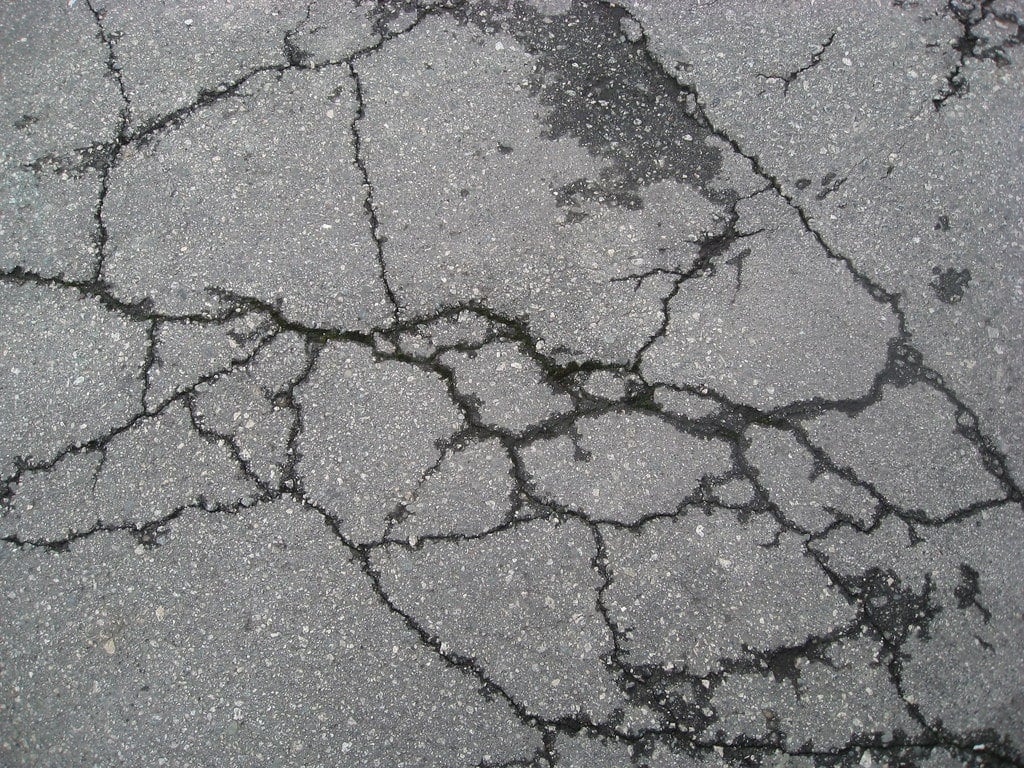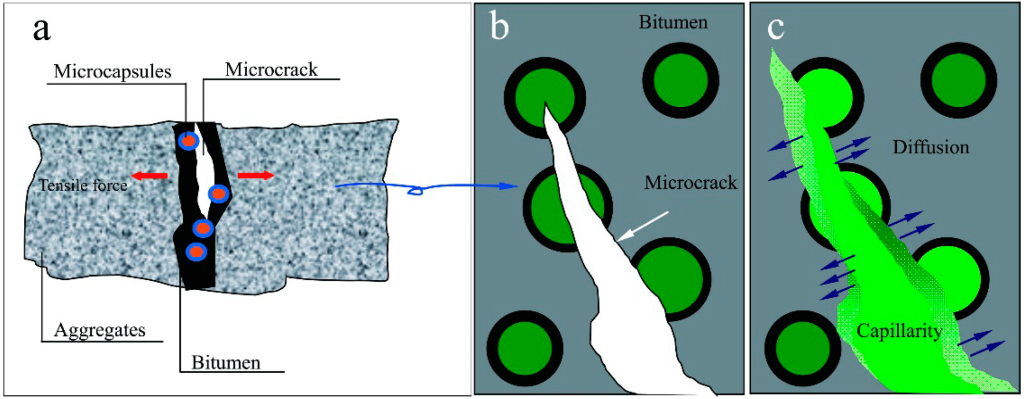Self-Healing Bitumen
A Revolutionary Technology for Sustainable Road Infrastructure
Self-healing bitumen technology is one of the most groundbreaking innovations in the field of road construction, offering a smart, durable, and sustainable solution to modern pavement maintenance. The concept of this product aims to enhance the longevity and performance of asphalt by utilizing advanced materials and mechanisms that enable it to repair its own cracks and surface damage. This technology has the potential to significantly reduce maintenance costs, increase road durability, and extend the service life of pavements.

What is Self-Healing Bitumen Technology?
Self-healing bitumen technology refers to the incorporation of specialized additives or materials, such as microcapsules or polymers, into the bitumen mix to allow the material to automatically repair cracks, ruts, and surface damage over time. This technology actively replicates natural self-healing processes found in biological systems, where damage is repaired automatically without any external intervention. By incorporating healing agents into the asphalt binder, the bitumen is able to “heal” itself when cracks form, preventing further deterioration and preserving the structural integrity of the pavement.
The self-healing mechanism of bitumen can be achieved through different approaches, including:
- Microencapsulation: The use of tiny capsules filled with healing agents that break open when cracks appear, releasing the healing material to seal the cracks.
- Polymer Modification: The incorporation of certain polymers or elastomers that improve the bitumen’s ability to recover from stress and cracks.
- Asphalt Mix Design Adjustments: The addition of specific materials to enhance the bitumen’s ability to adapt and resist damage.
Mechanism of Self-Healing Bitumen
The self-healing mechanism of bitumen operates on the principle that when cracks or damage appear in the pavement, the healing agents integrated into the asphalt mix become active. These agents then move towards the damaged areas, effectively sealing the cracks and restoring the integrity of the surface. These agents then bond with the surrounding bitumen, effectively sealing the crack and restoring the structural integrity of the surface.
- Microcapsules: Microencapsulation is one of the most widely studied methods for self-healing bitumen. The microcapsules contain healing agents such as oils, resins, or polymers that are designed to break open when the bitumen is damaged. Once the capsules rupture, the healing agents are released and fill the cracks, bonding the surrounding bitumen particles to prevent further damage.
- Polymers and Elastomers: The addition of specific polymers can enhance the flexibility and elasticity of bitumen, allowing it to stretch and absorb stresses without cracking. These polymers can help improve the bitumen’s ability to resist low-temperature cracking and high-temperature rutting.
- Thermal Healing: Some self-healing bitumen have the ability to heal themselves when exposed to elevated temperatures. This is particularly useful for addressing issues like rutting and fatigue cracking, which occur under high traffic loads and temperatures.
Performance of Self-Healing Bitumen
Self-healing bitumen has demonstrated significant improvements in the performance of asphalt pavements, particularly in terms of crack resistance, longevity, and overall durability. Key performance benefits of self-healing bitumen include:
- Increased Durability: Self-healing bitumen has been shown to significantly extend the service life of pavements by preventing the spread of cracks and minimizing the need for frequent repairs.
- Enhanced Crack Resistance: The ability of self-healing bitumen to seal cracks before they propagate helps to improve the overall crack resistance of the pavement, reducing the likelihood of water infiltration and further damage.
- Improved Fatigue Resistance: The incorporation of healing agents and polymers in the bitumen mix enhances its ability to resist fatigue cracking, which is a major cause of pavement failure due to repeated traffic loads.
- Better Rutting Resistance: Self-healing bitumen can help mitigate rutting, which is a common problem in pavements subjected to high traffic volumes and elevated temperatures.
Experiments and Studies on Self-Healing Bitumen
Numerous studies and experiments have been conducted to evaluate the effectiveness of self-healing bitumen technology. In these experiments, researchers have focused on evaluating the healing efficiency, durability, and performance of various self-healing bitumen formulations. Key findings include:
- Microcapsule-based Self-Healing Bitumen: Studies have shown that microcapsules containing healing agents can significantly improve the healing efficiency of bitumen. When cracks form, the capsules rupture and release the healing agents, effectively sealing the cracks and restoring the material’s performance. Researchers have found that the addition of microcapsules can enhance the healing efficiency by up to 90%.
- Polymer-modified Self-Healing Bitumen: The use of polymer additives in bitumen has been shown to improve its ability to recover from thermal and mechanical stress. These polymers enhance the flexibility of the bitumen and allow it to stretch and absorb stresses, which helps to prevent crack formation and extend the service life of the pavement.
- Thermal Healing Studies: Some studies have investigated the thermal healing capabilities of self-healing bitumen. These studies found that when the damaged pavement is exposed to higher temperatures, the bitumen becomes more fluid, allowing the cracks to heal naturally. This type of healing is particularly effective in hot climates where pavement temperatures often exceed the normal range.
Applications and Uses of Self-Healing Bitumen
This technology has a wide range of potential applications in road construction and maintenance. Some of the key areas where this technology can be applied include:
- Urban Roads and Highways: Self-healing bitumen can be used in urban roads and highways to reduce maintenance costs and increase the lifespan of pavements. The ability to heal cracks automatically reduces the need for costly repairs and helps to keep the roads in better condition for longer.
- Airport Runways: The use of self-healing bitumen can improve the durability and safety of airport runways, where the pavement is subjected to heavy loads and extreme weather conditions.
- Rural and Low-Traffic Roads: In rural areas or regions with low traffic volumes, this kind of bitumen can help reduce maintenance costs by preventing the formation of cracks and reducing the frequency of repairs.
- Eco-friendly and Sustainable Infrastructure: Self-healing bitumen can contribute to the development of sustainable infrastructure by reducing the need for frequent repairs and the environmental impact of road construction.
Conclusion
This technology is a transformative innovation that offers several benefits for road construction and maintenance. The ability to repair cracks and damage automatically not only improves the performance and longevity of asphalt pavements but also reduces maintenance costs and extends the lifespan of roads. As research and development in this field continue, self-healing bitumen will likely play a significant role in the future of road infrastructure, offering a more sustainable and cost-effective solution to pavement management. By incorporating self-healing technologies into asphalt, the future of road construction looks more durable, eco-friendly, and cost-efficient. Read More
